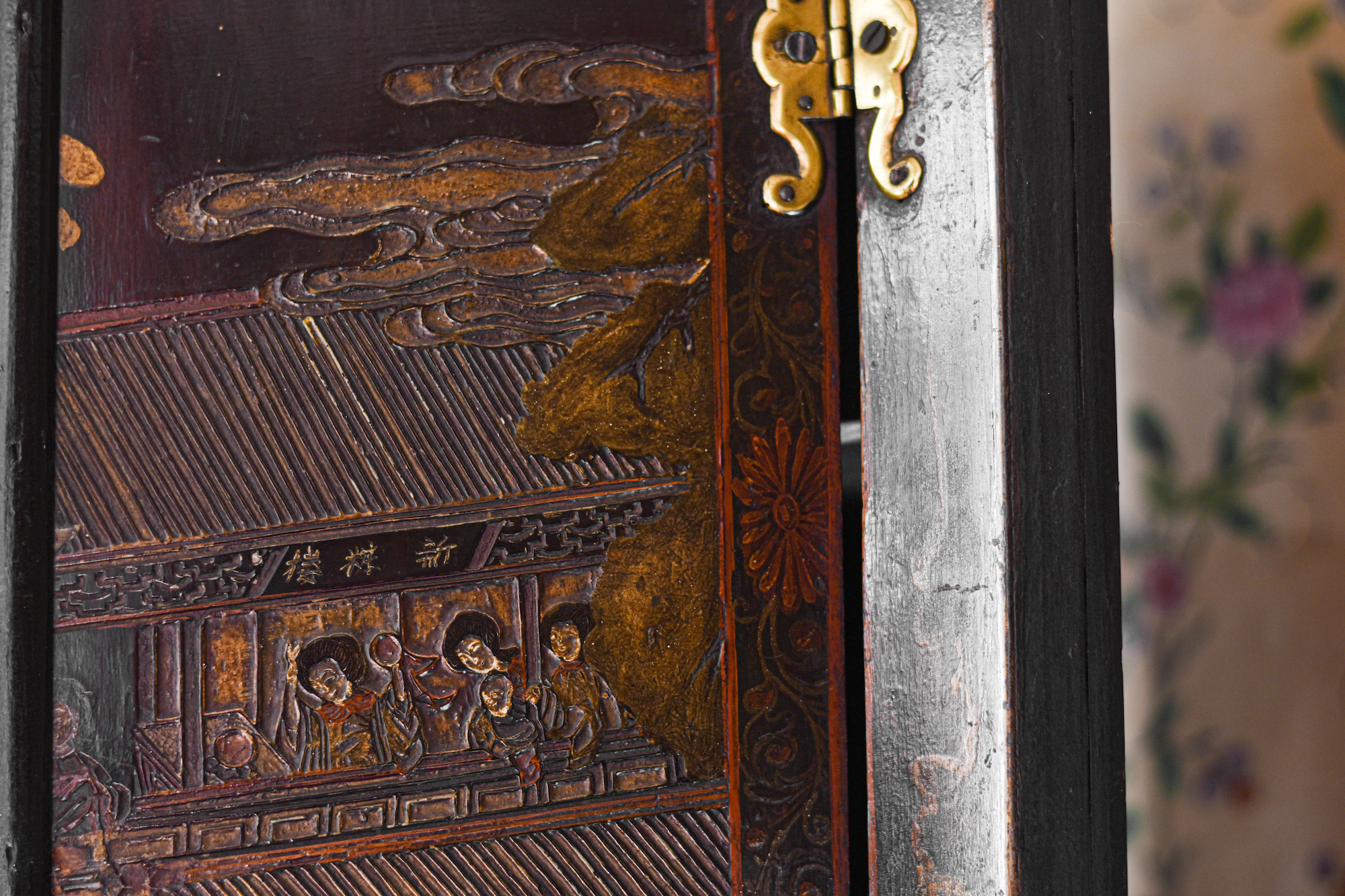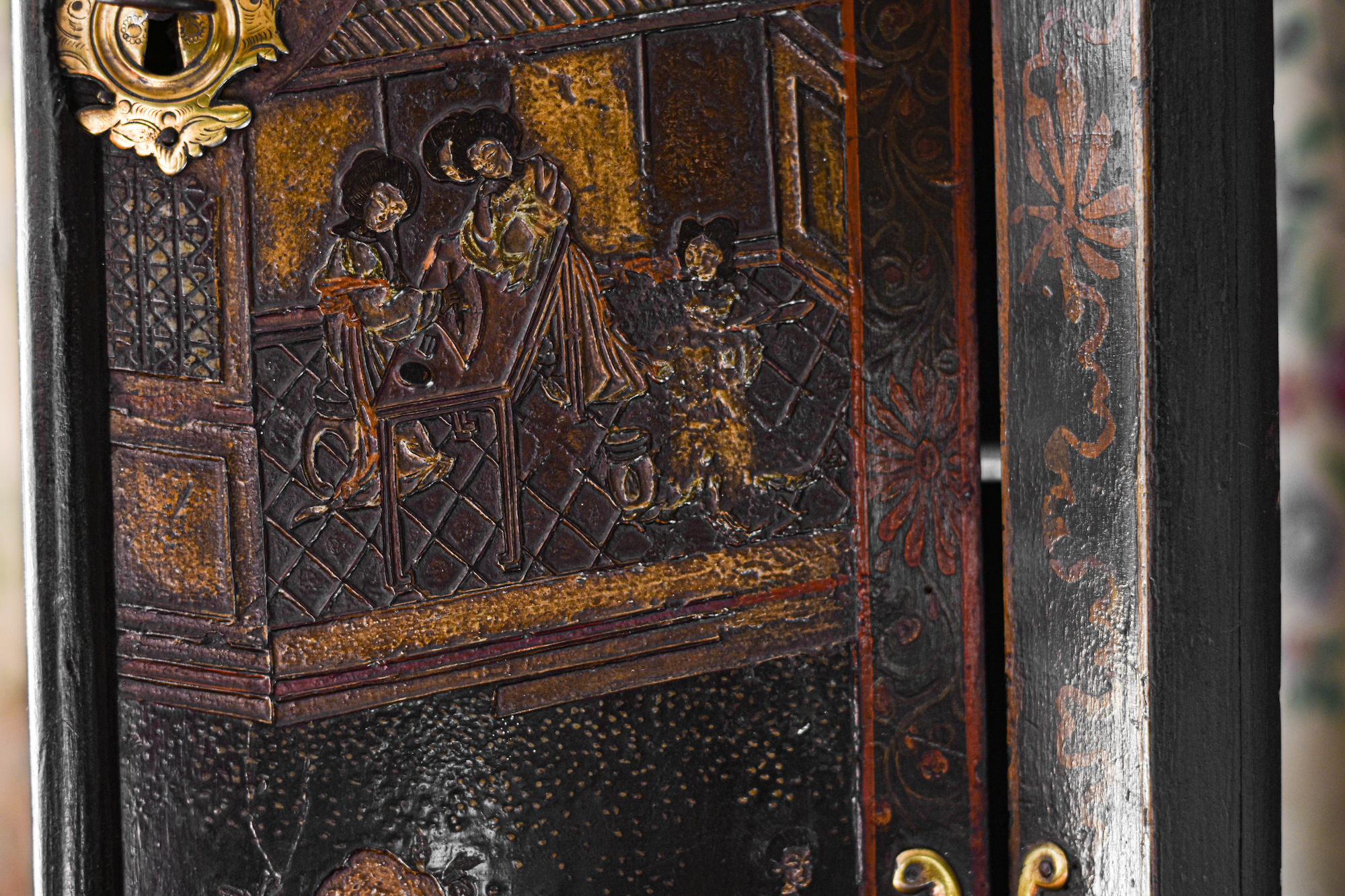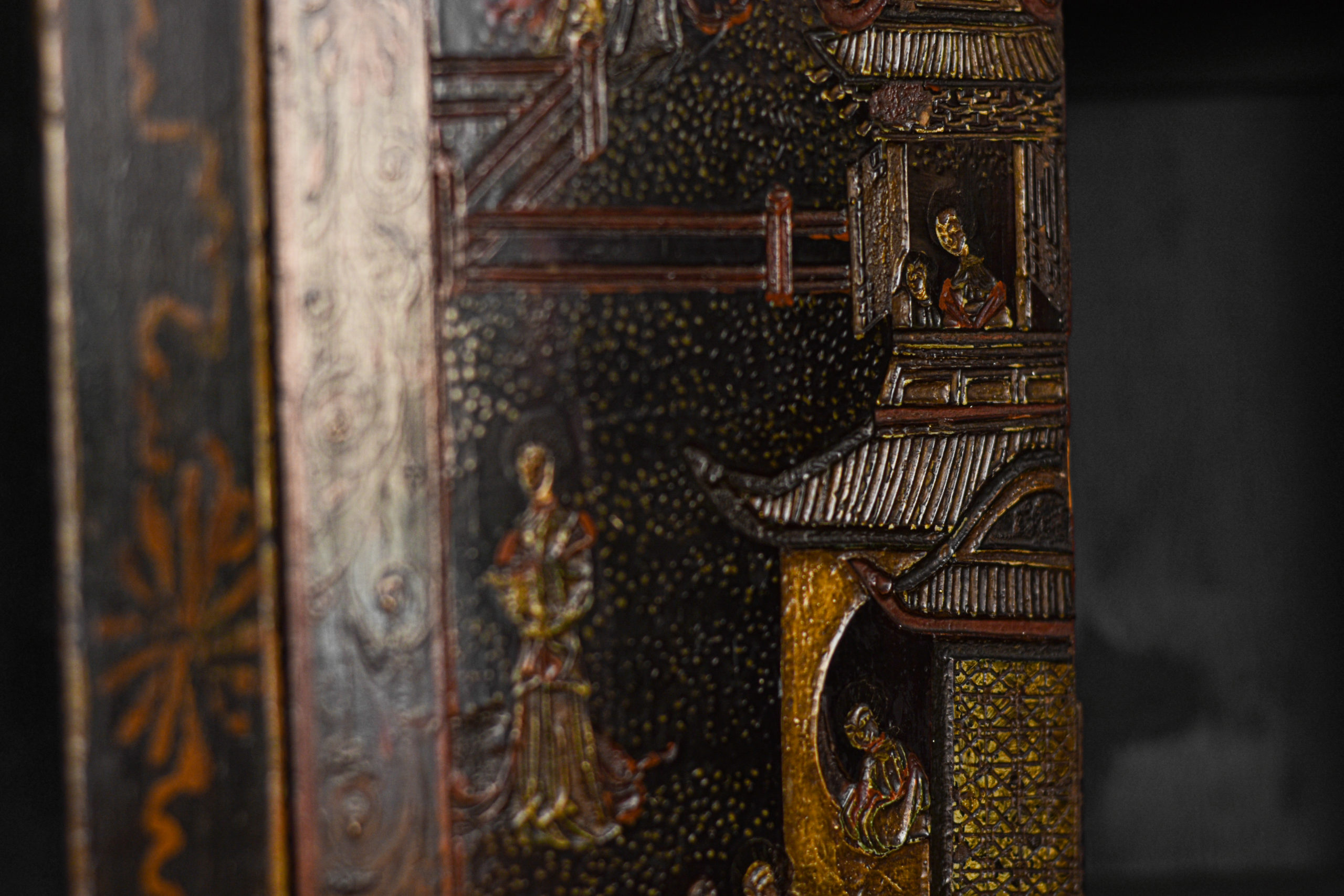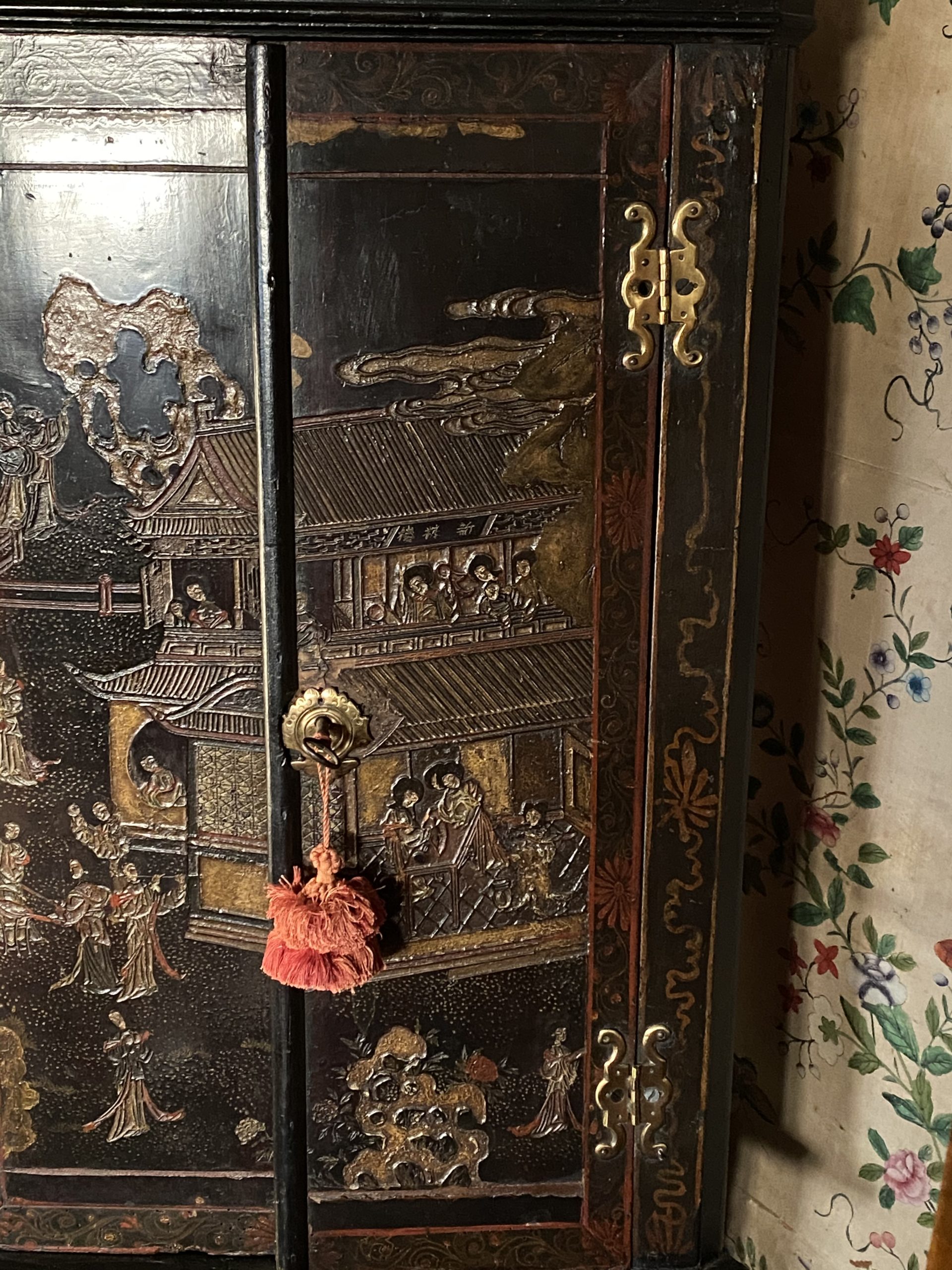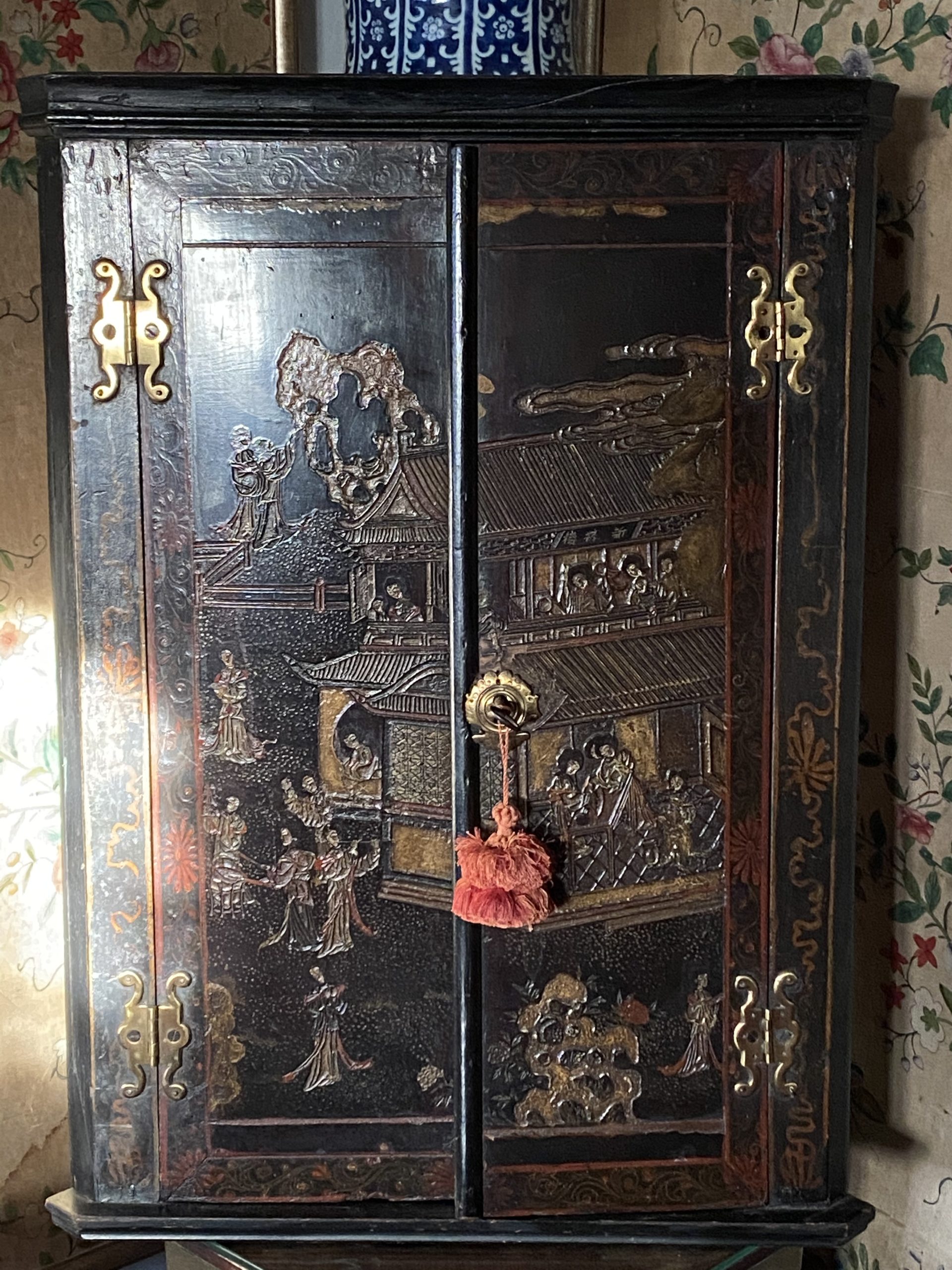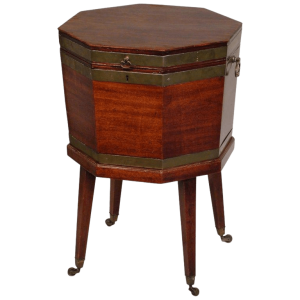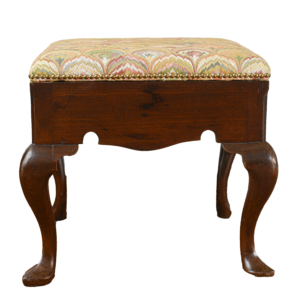Description
An early-18th century Coromandel lacquer corner cupboard or cabinet.
This is rare – high quality Coromandel lacquer work (incised decoration) – not to be confused with the usual English japanned versions.
This is also referred to as Bantam work, originating in Bantam, Dutch East Indies, and China, for export to the European market.
The subject matter is of a major pavilion with numerous courtiers – most unusual to see only females – it has been suggested that they may be concubines to a Mandarin.
All of high quality and in the sought-after and refined chinoiserie taste.
In excellent unrestored state, retaining vibrant colours and all its original hardware. This is a chic antique, and makes a lovely chinoiserie drinks cabinet, with two fitted shelves. Ready to use.
Measures:
H: 79 cm (31 1/4’’)
W: 57.5 cm (28 1/2’’) max
D: 31.5 cm (12 1/2’’)
The fashion icon Coco Chanel had a large collection of Coromandel lacquer items in her Parisian apartments.
References:
https://en.wikipedia.org/wiki/Coromandel_screen
Coromandel lacquer is a type of Chinese lacquerware, latterly made mainly for export. Referred to as such only in the West because it was shipped to European markets via the Coromandel coast of South-East India, where the Dutch East Indies Company (VOC) and its rivals from a number of European powers had bases in the 18th century.
A Technical Study on Chinese Lacquer Technology: Case …
https://www.ucl.ac.uk/archaeology/events/2018/dec/...
Coromandel lacquer is also known as kuancai and shenke in Chinese. It is a type of polychrome lacquer where designs carved into the smooth lacquer surface were filled with painted colours. The technique has a relatively short manufacturing history and limited written record. Most of its surviving examples are found in European collections.
https://en.wikipedia.org/wiki/Bantamwork
In 18th-century England Bantamwork signified a particular style of export lacquerware which was cut into a layer of gesso, and then lacquered in colours.





